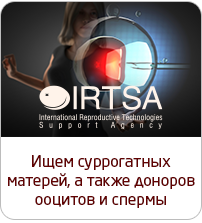Twins with different dads as a result of rare medical phenomenon
 Superfecundation - a specific term describing a rare medical phenomenon studied over centuries. It means twins born at the same time, from the same mother – but with different paternity. But it is quite possible, as a New Jersey court ruled this week in a highly publicized court case.
Superfecundation - a specific term describing a rare medical phenomenon studied over centuries. It means twins born at the same time, from the same mother – but with different paternity. But it is quite possible, as a New Jersey court ruled this week in a highly publicized court case.
A mother of twins was applying for public assistance in Superior Court in Passaic County, New Jersey, when something unexpected happened: the paternity tests showed two fathers, according to the court ruling, originally reported by The New Jersey Law Journal.
When the woman admitted she had a different sexual partner within days of the alleged conception of the twins, the judge had ordered the paternity suit. The genetic tests resulted in the known father being financially responsible for the one child for which he was biologically responsible.
At its most basic, the biology requires a short window of time – and multiple sex partners. Studies have shown that if a woman has sex with two different men during ovulation, the separate sperm can fertilize two different eggs. The fraternal twins then have separate fathers, but are otherwise normal twins born at the same time.
According to some estimates, the superfecundation possibility is one in 13,000. But the chances are much increased, when sex and ejaculations are accordingly increased, according to the 2005 book Multiple Pregnancy: Epidemiology, Gestation and Perinatal Outcome.
“Natural multiple inseminations within the time period of potential fertilization means an increased coital frequency,” the authors concluded.
In some ways, it’s a relatively unexplored phenomenon – because the biological and social conditions make it so rare. A study in 1992 analyzed 39,000 cases in a parentage database – and by whittling down the sample to two-egg pregnancies mentioned in paternity lawsuits, found superfecundation to comprise 2.4 percent of the twin births.
But the moment of conception is not always so potentially scandalous. A woman gave birth to babies of two different races in England in 2002, after undergoing in vitro fertilization that apparently provided two different sperm samples.
DNA technology is only now making the fertilization of multiple eggs and multiple sperm better understood, according to the medical texts.
“The saga of superfecundation is being revived in recent years, with application of modern technology to understand this phenomenon,” the Multiple Pregnancy authors wrote.
Source: laboratoryequipment.com
- The central office of IRTSA Ukraine completely restores work
- How we work during the COVID-19 pandemic
- 1st International Congress on Reproductive Law
- Soon Americans may face a new ethical dilemma
- ‘Friends’ star Jennifer Aniston is pregnant with twins
- Image processing technology can impact the success rates of ivf
- Editing genes of human embryos can became the next big thing in genetics
- Supermodel Tyra Banks undergoes IVF
- Scientists discovered a new, safer way for egg freezing
- French scientists have managed to grow human sperm cells in vitro









